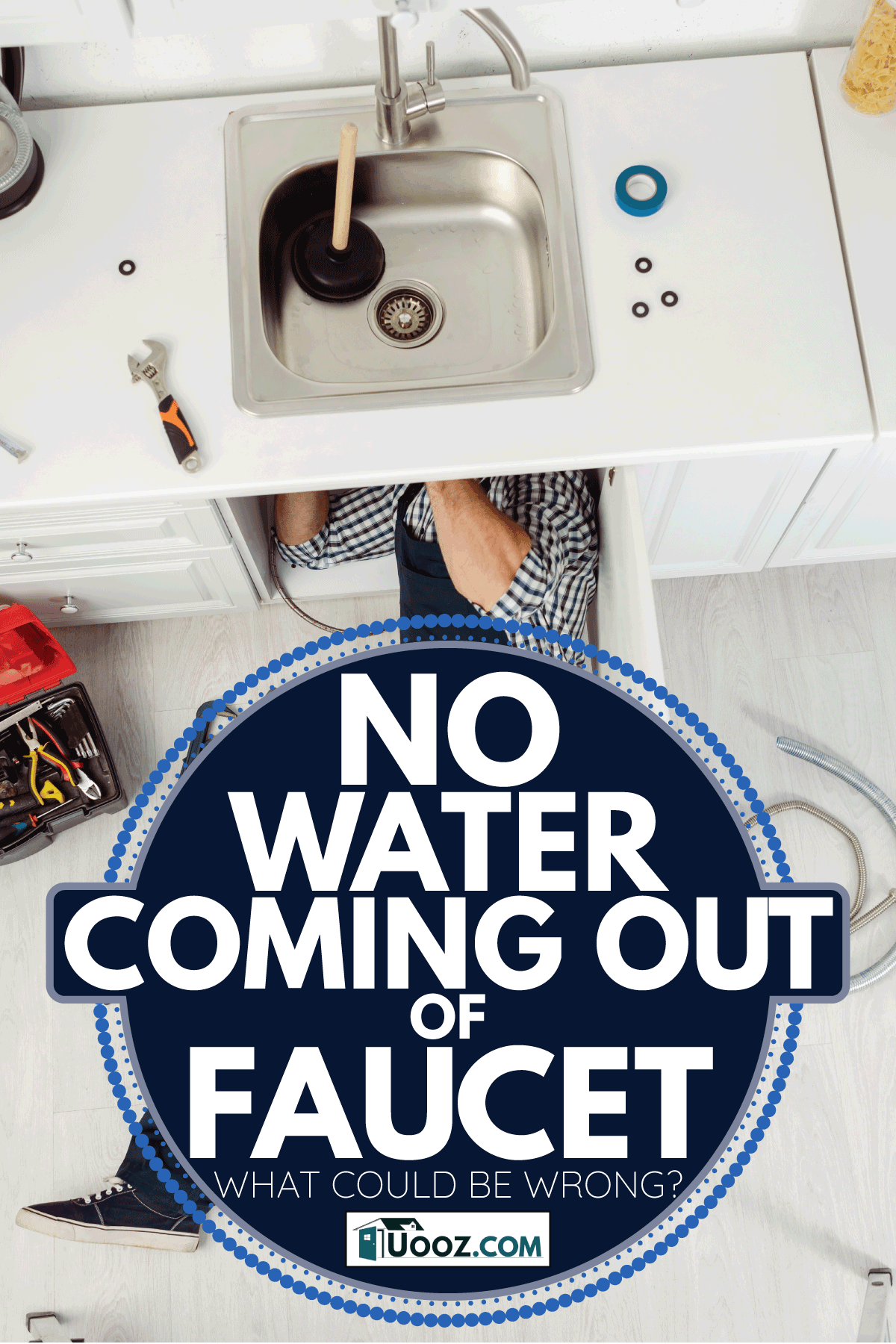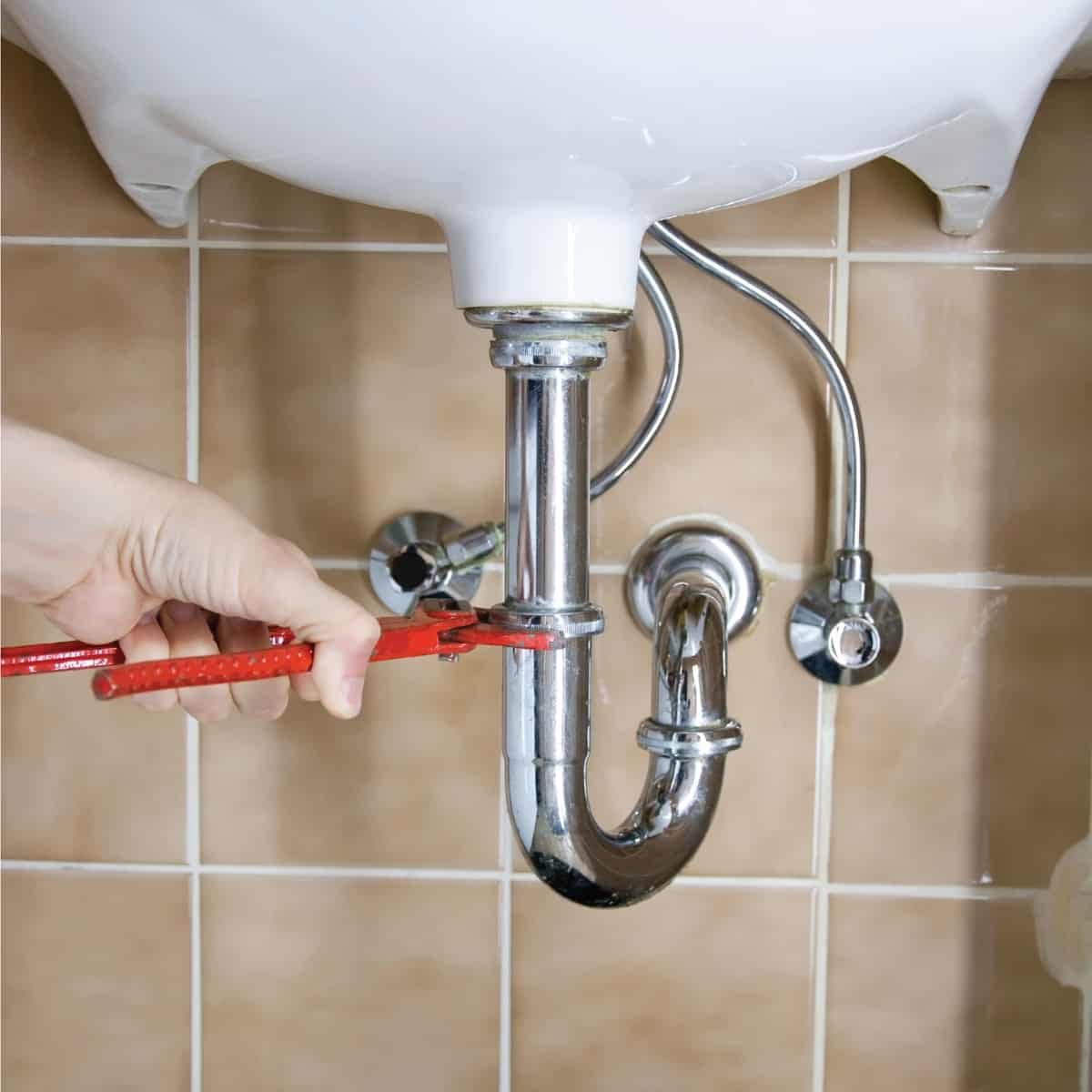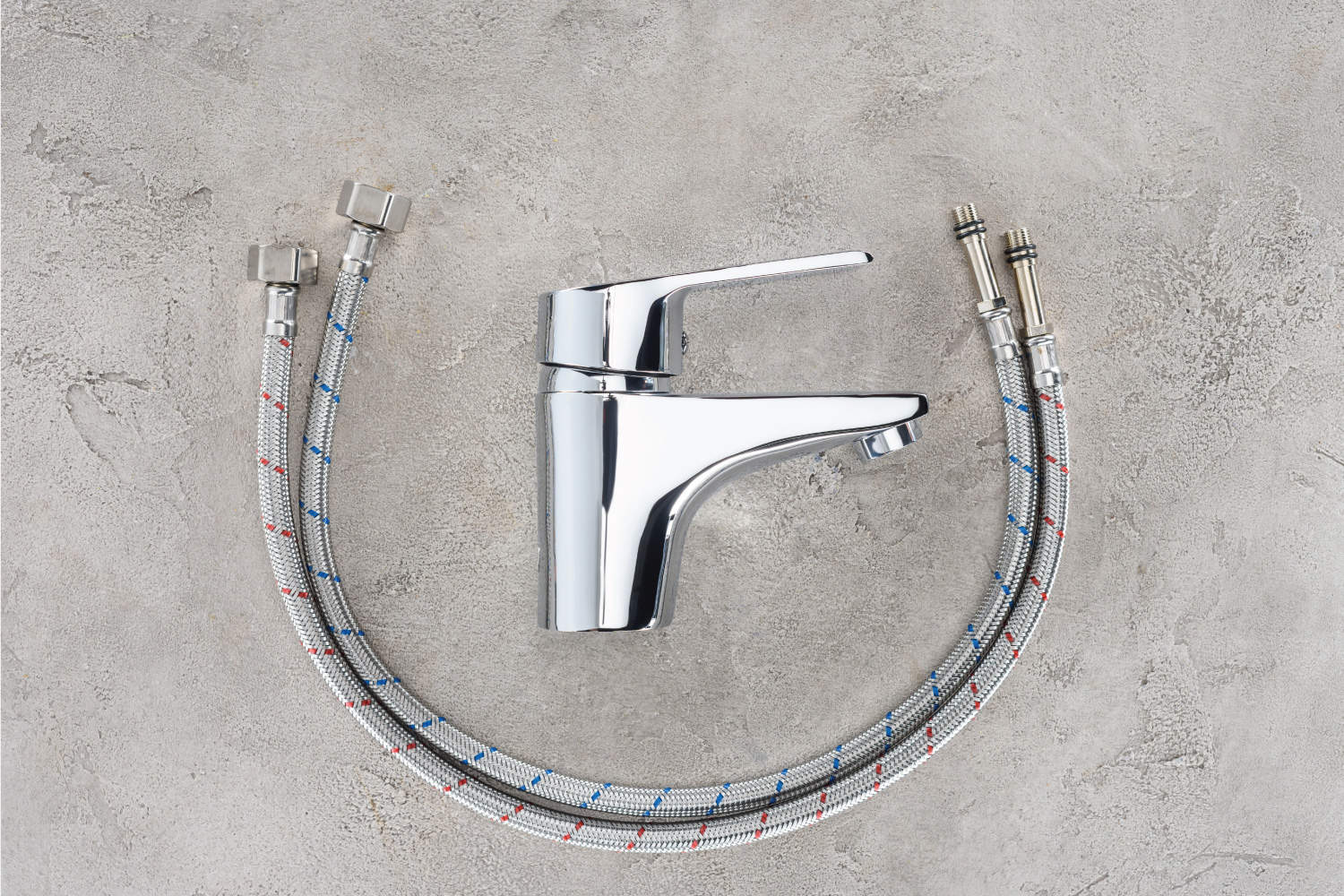Discovering that there is no water coming out of your faucet can be a huge inconvenience. What causes this? And more importantly, how do you fix it? We've looked into the various reasons that may cause faucets to stop working, and in this post, we will go over them.
Here are potential issues that would prevent water from coming out of your faucet:
- Waterline issues
- Faulty water valves
- The tap washer is dislodged
- Frozen pipes
- Water leaks
- Old pipes and components
- Rusted water pipes
- Airlocks in the plumbing system
- Clogged water pipes
Today's bathroom and kitchen faucets are more sophisticated than ever before. That being stated, the task of troubleshooting these components can be more difficult for the average homeowner. Continue reading to learn more about the reasons why a faucet may stop working and the best ways to troubleshoot each issue.

Common Reasons Why Your Faucet May Not Run Water

Waterline Issues
Sometimes a non-working faucet can be caused by waterline issues. To determine if this is the issue, check the other faucets in the house to see if they are working. It's also a good idea to reach out to a few neighbors to see if they still have running water. If no one has any running water and then the issue could be with the water supplier and the main waterline. If so, you may want to reach out to the water supplier to have them troubleshoot the issue for you.
Faulty Water Valves
Water valves are responsible for supplying water to each water source in your home. If the valves are not open or become faulty, faucets and bathtubs will stop working. The best way to determine if this is the issue is to check the valve to ensure that it is completely open and functioning properly. If it's not, you'll need to contact the plumber to advise you. And if you live in an apartment, you'll want to check with your landlord to see where your particular valve is located.
The Tap Washer Is Dislodged
Sometimes a faucet may stop working if the tap washer has been dislodged or damaged. When this happens, you may notice that the tap will begin to trickle water sporadically before it stops running completely. To determine if this is the issue, check all of the taps in the house to ensure that they are working. If it's just one isolated tap, consider inspecting and then replacing the tap washer, if needed, as soon as possible.
Frozen Pipes
Frozen pipes can prevent water from flowing through all of the water sources of your home. This can be an isolated issue or one that affects the main water line coming to your home.
If you live in an area that has recently had temperatures that fell below zero, this could be the cause of your water issues, particularly if your home has been empty and no water has been run in a few days. You can use a heat gun or hairdryer to unfreeze your plumbing pipes. However, it's best to do so with caution as the pipes can burst and cause severe flooding in your home.
Check out this video for unthawing frozen pipes:
Check out this heat gun on Amazon.
Water Leaks
If you have leaks in your plumbing system, this can also cause your faucets to stop working. Water leaks siphon water pressure and can cause serious issues if they're not addressed immediately. Check for leaks by following the water supply lines in and around your home. Check for any signs of water drips, ruptured pipes, or any wet areas beneath your faucet.
If you notice any dents in your plumbing pipes, this could be the source of your issue. And if this is the case, you'll need to contact a plumber to have the pipes repaired or replaced.
Old Pipes and Components
If you live in a home that's over 150 years old, there's always a possibility that the pipes that supply your water are old or incorrectly sized for your home. This can cause low water pressure and clogs. Be sure to check the other water sources in your home to determine if they are working. If they aren't or if you notice any strange sounds when you try to turn on the water, this could be the culprit.
Rusted Water Pipes
Old pipes or badly installed pipes can contain rust build-up, which will cause them to gather at the tap. If you have noticed any orange-colored water or rust surrounding your faucet, this may keep your faucet from working. Rust can also come from daily wear and tear on the faucet, which may also cause a sediment blockage in the waterline. If this is the issue, it's recommended that you contact a licensed plumber to properly mediate this issue.
Airlocks In The Plumbing System
If an airlock bubble forms in your plumbing system, it can be challenging to break it apart. When this problem occurs, it'll definitely stop water from flowing through your plumbing system properly, and it may cause further issues down the line if not properly addressed. You'll need to clean out your water line to get rid of the airlock, or you can have a professional plumber do this for you.
Clogged Pipes
Typically, when a water pipe is clogged, no water or very little water will flow out of the faucet. If you noticed that the water has stopped working on all of your other water sources as well, then the pipes to your water line can be clogged due to sediment buildup or obstructions. Heavy metal deposits and lime can also cause clogged pipes as well. If this is the case, it's best to call a plumber to do a video inspection to identify and clear any clogs.
What causes low water pressure in only one faucet?

More often than not, when low water pressure only occurs in one faucet is typically caused by issues with the aerator. Aerators can become clogged due to a buildup of sediment from hard water or lime. You can determine if this the issue by running both the cold and hot water through all of the faucets in your home simultaneously.
If only one sink displays low water pressure, then it's likely a clogged caused by the aerator, or in some cases, a clogged faucet cartridge. If the aerator is clogged, you can twist it off to clean it and then re-attach it to the faucet. However, if the cartridge is clogged or malfunction, you'll need to remove the faucet to repair or replace it.
How do you clean sediment out of water pipes?
The quickest and easiest way to get rid of the sediment in your water pipes is to clean out the waterline. To clean out your pipes, start by turning on the cold water in all of the faucets in your home. Be sure to turn the faucets on full force and let them run for about 20 to 30 minutes. As the water runs, you should notice that the water becomes clear. If it doesn't, repeat the process.
Plumbers recommend flushing out your water pipes every 18 to 22 months to prevent sediment build-up and potential clogs.
Will an airlock clear itself?
It depends on how big the airlock is. On occasion, a small airlock can clear itself. However, persistent airlocks will require manual removal. The quickest way to get rid of it is to first attach a water hose to the tap that has the airlock. After screwing the hose to the tap, take the other end of the hose and attach it to a currently working tap.
Ensure that the water hose is completely sealed around the taps to ensure that no air leaks outside when you turn it on. Next, turn the tap that doesn't have the airlock on full blast to create pressure inside the hose. Within a few minutes, the pressure should break up the airlock, allowing the water to run again. It's best to run the water for anywhere from 2 to 10 minutes to relieve the air pressure. If the airlock still remains after 15 to 20 minutes, you may need to contact a plumber for assistance.
Check out this video on how to remove an airlock:
How do I reset my water pump?
At some point, you may need to reset your water pump if it has experienced a power failure. Though this process may vary slightly depending on the brand and type of water pump you have, here is an overview of the process to perform a reset.
Step 1 - Turn off the power
Start by turning off the power to the water pump. You can usually find this located in the circuit breaker box. If your switches aren't labeled, the pump's switch will usually be located at the main switch or the switch for the lower section of the house.
Step 2 - Remove the cover
Take the cover off of your water pump by turning it to the left and using a screwdriver to pry it up from the edge. Some water pump lids are held down with a nut, which will need to be loosened before the cover can be pulled up.
Step 3 - Clean the exterior
Take a clean rag or an old toothbrush and remove any dead insects, leaves, or other debris, or other debris from the contacts on the pump. Also, be sure to wipe down the exterior edges where dirt and debris may have accumulated. Lastly, inspect the pressure gauge to ensure that it's functional.
Step 4 - Restore the Power
After you have cleaned the contacts and the pump's lid, replace the cap and tighten the nut. Next, flip the breaker switch on to restore the water pump's power.
Step 5 - Pull Pump Lever
Next, press down on the pump lever and hold it at a 25-degree angle. Do this twice until you hear a clicking sound. Take note that some pump levers may not make a sound but will stop once they reach the bottom position. Hold the lever in place for about 1 to 2 minutes so that the water pressure can build inside of the pump. The pump will turn back on once it's reset, at which point you can release the lever.
Wrapping Things Up
As you can see, several factors can cause your faucet water to stop working. The best thing to do is to troubleshoot the issue and determine if it's an isolated malfunction with one faucet or a bigger issue with your home's plumbing system.
Before you go, be sure to check out our other posts:

